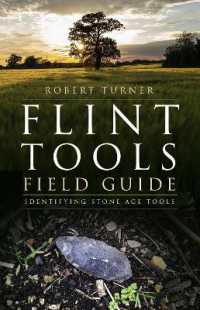Full Description
Children's theatre in the UK is thriving right now. Interest is growing in the educational, emotional and expressive benefits of theatre for young people; arguments about why children should watch theatre have become a central motif in debates about cultural policy and arts education. Yet, surprisingly, there has been almost no detailed and reflective research on these matters. While young children (aged 4-11) are increasingly provided for in terms of tailored theatre performances, the nature of children's theatrical perceptions and their experiences of being in an audience has scarcely been investigated. This book uses innovative visual-arts based audience research, practitioner interviews and contextual analysis to fill this gap in research and explore the nature of young children's experiences of live theatre. It investigates three primary areas: the cultural policy, educational and creative contexts in which theatre for children is made; children's aesthetic experiences of theatre; and, the approaches through which children's engagement with theatre can be enhanced, extended and deepened. "The Young Audience" provides a valuable resource for teachers, artists, researchers, students, policy makers and other professionals working with theatre and with children in various other contexts and environments. It significantly enhances existing cultural policy and educational research by providing a detailed, analytical and methodologically grounded understanding of how young children perceive and respond to live theatre performances. It thus provides vital insights into how we can better support and enhance children's engagement with theatre.
Contents
Part OneEducation Philip Pullman: Theatre - the true key stage Chapter 2 From Audience Development to Cultural Rights Tony Graham: Children grow up not down Chapter 3 Quality in Theatre for Children Peter Manscher and Peter Jankovic: Eye-level Part Two: The Theatrical Experience Chapter 4 Researching Children's lived Experiences of Theatre Chapter 5 Theatrical Illusion and Material Reality Chapter 6 Theatrical Competence Chapter 7 Moral or Metaphorical Engagement Part Three: Enhancing Engagement Chapter 8 Enhancing Engagement Chapter 9 Drawing on the Experience Chapter 10 Talking about Theatre Talking about Theatre resource Conclusion 'Looking': Photographs by Lisa Barnard The Audience's Gaze







